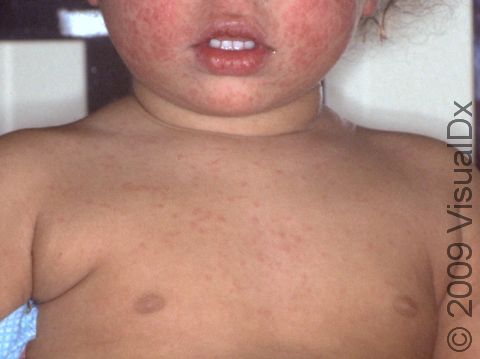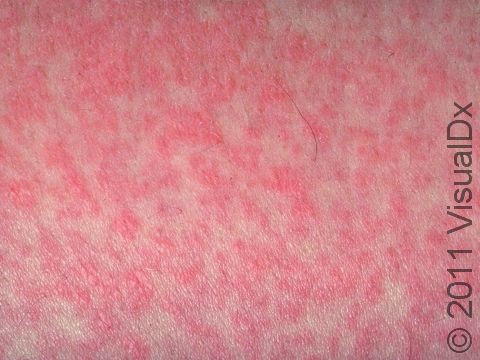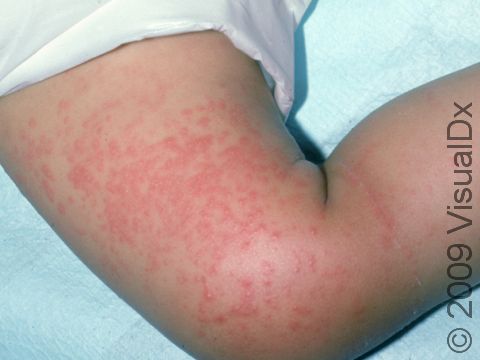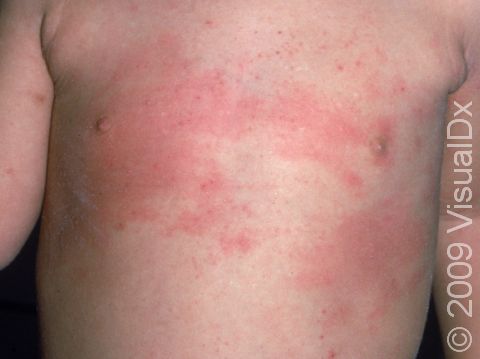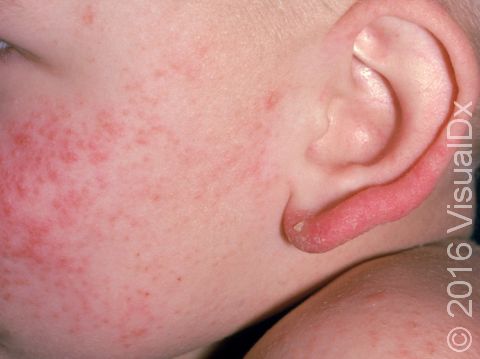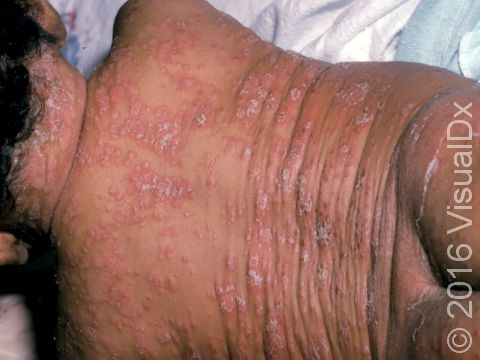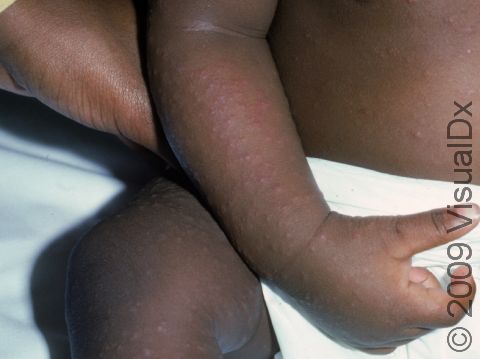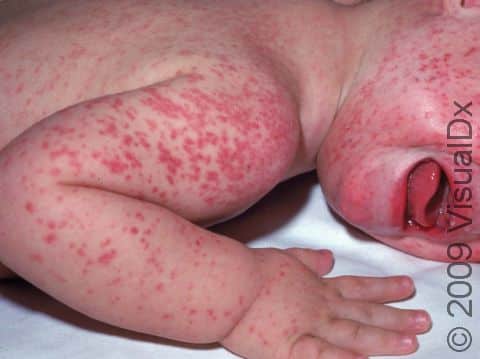Viral Exanthem
A viral exanthem is the general term for a rash caused by a virus. Many rashes can look similar, and it is often difficult to determine which exact virus caused the rash. Other symptoms your baby has along with the rash may provide clues as to which virus is responsible, though. Often the exact virus is not determined but the illness is treated with supportive care, meaning that the symptoms are treated until they disappear. Viral exanthems generally appear red or purplish, blotchy, and are present from head to toe.
Who's At Risk?
Viral exanthem is common in infants and children who have acquired a viral infection such as one causing cold symptoms or a sore throat because they have not yet developed immunity to many of the common viral infections.
Signs & Symptoms
A widespread rash of pink-to-red macules (small, flat, smooth areas of skin), papules (small, solid bumps), patches (flat, smooth areas larger than a thumbnail), or plaques (raised or bumpy areas larger than a thumbnail) occurs primarily on the trunk, arms, and legs. In darker skin colors, the redness may be harder to see, or it may look purplish. Rarely, vesicles (small blisters) may be present. The rash may or may not be itchy. In addition to the rash, your baby may have fever, may sleep more, may not eat as much, or may be irritable.
Self-Care Guidelines
For infants with only mild symptoms, no treatment is required, and the rash and illness often last for only a few days and go away on their own. However, to improve your baby’s symptoms, you might try:
- Giving them infants’ acetaminophen (eg, Tylenol) or ibuprofen (eg, Motrin) for low fever. (DO NOT give aspirin.)
- Encouraging the baby to drink more fluids.
Treatments
The medical professional may do blood tests or cultures to look for more serious causes of the rash.
There is no treatment or cure for most viruses, so if the rash is viral in nature, your baby’s medical professional may simply recommend ways to improve the symptoms while waiting for the virus to clear on its own.
Visit Urgency
See the baby’s medical professional if they have a rash that is spreading or if they have any of the following:
- Fever with a temperature over 101°F (38.33°C) that lasts more than a day.
- Diarrhea and/or vomiting.
- Severe cough or phlegm containing pus or blood.
- Spots, swelling, and redness on the palms or soles; blisters; or swollen and painful joints.
- Red eyes, mouth, or tongue.
- Rash that is bright red and does not fade (blanch) when pressure is applied with a finger.
Trusted Links
References
Bolognia J, Schaffer JV, Cerroni L. Dermatology. 4th ed. Philadelphia, PA: Elsevier; 2018.
James WD, Elston D, Treat JR, Rosenbach MA. Andrew’s Diseases of the Skin. 13th ed. Philadelphia, PA: Elsevier; 2019.
Kang S, Amagai M, Bruckner AL, et al. Fitzpatrick’s Dermatology. 9th ed. New York, NY: McGraw-Hill Education; 2019.
Paller A, Mancini A. Paller and Mancini: Hurwitz Clinical Pediatric Dermatology. 6th ed. St. Louis, MO: Elsevier; 2022.
Last modified on June 17th, 2024 at 1:36 pm

Not sure what to look for?
Try our new Rash and Skin Condition Finder
